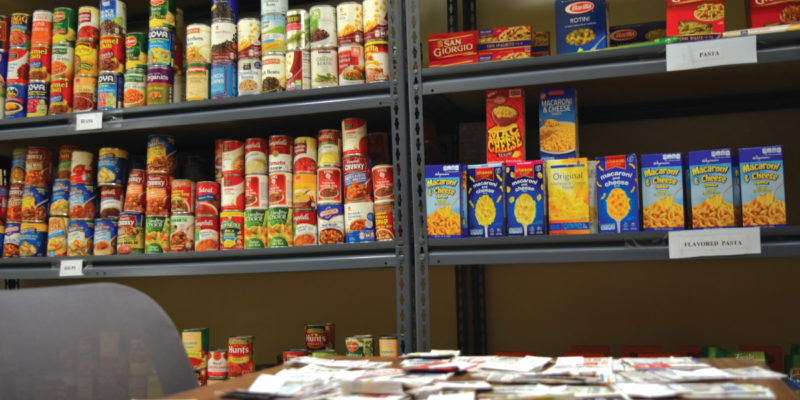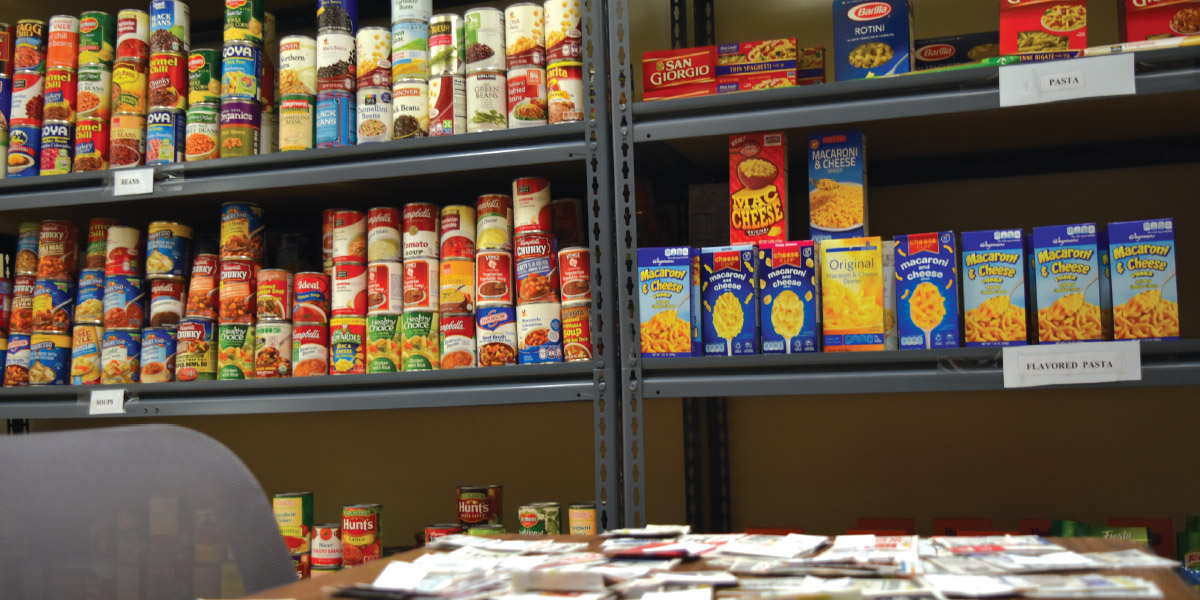Several years ago, faculty and staff at Howard Community College came to an unsettling realization: Despite being located in Columbia, which is in one of Maryland’s wealthiest counties, based on per-capita income, HCC still had a significant number of students experiencing hunger and food insecurity. The college’s president and senior leadership supported the idea of an on-campus food pantry, and the Office of Student Life took the lead in developing and managing this new student service.
Finding the space to house the food pantry proved to be the biggest challenge. HCC currently enrolls more than 14,000 students—an increase of nearly 100 percent in the last 10 years—and approximately 48 percent of them receive financial aid. The fast growth had put a premium on classroom and office space, particularly while new buildings were being constructed on campus. As a result, several years passed before our facilities staff identified empty space in a trailer that also housed a classroom and offices. Although the trailer space wasn’t ideal, we lined it with empty shelves, sponsored a campuswide food drive to fill those shelves, and officially opened the HCC Food Pantry in March 2016.
Six months later, the food pantry relocated to a fairly new building, taking over space that had originally been earmarked for another purpose. While smaller in square footage, the new space is easily accessible for low-income students who may struggle to pay tuition and purchase food for themselves or their families. By providing food as well as personal items, the pantry helps them stretch their tight household budgets a bit further.
Stocking and Staffing
During the planning stage, we created an advisory board to help determine how to stock and staff the food pantry. It included a cross section of people on campus, including representatives from the president’s office, faculty, safety and facilities, wellness, public relations, development, and our Career Links program (which works with high-risk students, such as single parents and displaced homemakers). The members provided valuable feedback from various perspectives. Their input, for example, prompted our initial decision to use only staff and faculty volunteers to operate the food pantry: We wanted to be sensitive to students who wanted to use the food pantry but not risk encountering fellow students.
The board also debated the hours of operation. We settled on opening the food pantry two days a week, on Tuesdays (from 4 p.m. to 6 p.m.) and Fridays (from noon to 5 p.m.). That schedule enables us to provide food on either side of the weekend. At other times, a student can request emergency access to the pantry through the Office of Student Life.
The food pantry is open to HCC students only; all we ask of users is a current student ID. There are no forms to fill out or questions about income because we don’t want to deter anyone who needs food. Students can visit the pantry once a week and select 10 items each time (or 11 items if they bring their own bag). The only limitation is that those items must be different. In other words, they can’t take two jars of peanut butter or three boxes of cereal during the same visit.

Lessons Learned
Here are some suggestions for opening a sustainable on-campus food pantry:
Learn from others. We contacted other community colleges in Maryland to ask questions of those who already had food pantries. Finding out what others did helped the advisory board determine how we would structure our operations and staffing. We also joined the College and University Food Bank Alliance (www.cufba.org), which shares best practices and conducts research on food insecurity.
Think long term. Despite pressing need, HCC didn’t want to rush into something that couldn’t be sustained. Several years passed before the idea of a food pantry became a reality, but we used that time to identify and build support within the community, and to develop fundraising and marketing plans.
Once the food pantry opened, we quickly determined that scheduling and managing volunteers took a lot of time and effort. That’s when the Office of Student Life hired a part-time employee—who works about 10 hours per week—to staff the food pantry and keep tabs on what items are most needed.
Find a partner. HCC’s development office helped us form a partnership with a local Whole Foods store. Just one food drive at the store, where we spent a day collecting groceries donated by customers, kept the pantry fairly well-stocked for almost four months.
In addition, the store donated a percentage of its sales from that day, providing us with cash to buy other items. Whole Foods has also offered to purchase a refrigerator for the HCC Food Pantry; unfortunately, we don’t have the space to accommodate one right now. Instead, we are planning a pilot program with Whole Foods, where students can stop by the food pantry once a week to pick up perishable items donated by the store.
Listen to your student population. We’ve taken many cues from conversations with students. HCC learned, for example, that many students utilizing its food pantry have children on reduced-fee or free school lunch programs. Those programs and the HCC Food Pantry do not operate during holiday breaks, putting more pressure on parents to feed their families. That led us to extend the pantry’s days and hours of operation before and after our winter break.
When the pantry started receiving more requests for non-food items, including diapers, we knew we didn’t have enough storage space to meet that need. In response, the pantry now provides $20 gift cards to local retailers so students can purchase non-food essentials.
Involve the entire community. At HCC, support of the food pantry has been strong. For example, HCC’s Arts Collective gave a free treat to audience members who brought items for the food pantry to certain play performances. When the pantry’s shelves were empty after winter break, a Race to Restock provided friendly competition among college staff; the office collecting the most items won a special lunch. HCC’s food service provider recently held a collection exclusively for breakfast items, while the diversity committee sponsored an everything-but-canned food drive.
Early on, however, the advisory board recognized that depending solely on the campus community to stock the food pantry might lead to burnout. Not wanting to rely on the same people again and again, we consciously publicized the food pantry within the wider community. In return, we’ve received many food and cash donations from local Boy Scout troops, religious organizations, community groups, and other food pantries with extra inventory. With the food pantry now entering its second year, we believe that the widespread support, the partnership with Whole Foods, and the campus commitment to addressing food insecurity are a recipe for its long-term sustainability.
SUBMITTED BY Schnell Reed Garrett, director of student life, Howard Community College, Columbia, Md.



